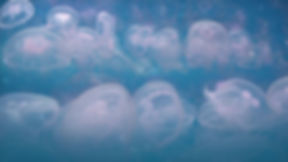


HABITATS
What are Habitats? and why are they important? Habitats are natural dwelling places of living organisms, characterised by physical & biological features in the natural environment. A habitat for animals is a place where a species may find food, shelter, protection & mates for breeding. For plants, the provision of light, air, water & soil in the correct combinations. Conserving natural habitats, other than for the simple reason of mitigating the global reduction of Biodiversity, is important for humans due to the huge Ecological Services we collectively benefit from. For example, that plants produce the oxygen we breath through photosynthesis & that it is estimated that 80% of the worlds human population employs herbs as primary medicines, with 40-50% of pharmaceuticals plant based, a couple of reasons among many (Ecosystem services are distinguished into 4 categories, by the Millennium Ecosystem Asessment report (2005): Supporting-services, Provisioning-services, Regulating-services & Cultural-services. For more info see the Wikipedia page).
The majority of industrialised nations have given up their natural forests and grasslands in preference for monocultural agricultural practices, in essence horizontal farming relative to population growth. Over the last century or so this has decimated natural habitats across the globe by taking up space, the space previously used by DNA based life in its biodiverse swarms, living in self-sustaining ecosystems. We live in an age where humans have been making an environmental mess (the Anthropocene), hence it becomes more crucially important, especially now to cherish the natural habitats not invaded by agriculture, concrete & pollution to preserve them where we can, study them and be aware of the unique creatures that live in niche environments.

Coastal Elicriso Gariga

Coastal Elicriso Gariga

Holm Oak Forest

Coastal Elicriso Gariga
recently added Habitat pages:
Coastal Elicriso Gariga - 5320 Low Formations of Euphorbias Close to Cliffs.
Holm Oak Forest - 9340 Quercus ilex Forests.
The Capo Testa SAC aims to protect a place where humans cannot make a mess and destroy the nature as we so readily do. It contains many unusual and unique (endemic) Mediterranaean habitats on the land and in the sea. Here the aim is document them. Valle Della Luna Ecology recognises European Nature Information System (EUNIS) classified habitat types, but also looks further to where habitats may merge forming a unique mosaic and new & novel habitats created by humans (plagio-climax). Plants and animals are transient, therefore classifications & boundaries change over time. Updates after survey work will continue, the hope is too preserve an example of this place, in this time, on the website, so someone can look back in years to come and compare the nature, to identify any negative changes and best practice solutions.
Habitat mapping & Ecosystem profiles of each habitat are included below to provide information on location/boundaries and complexity within each certain habitat type & location. Many pages and currently being constructed over time, thank you for your patience.






